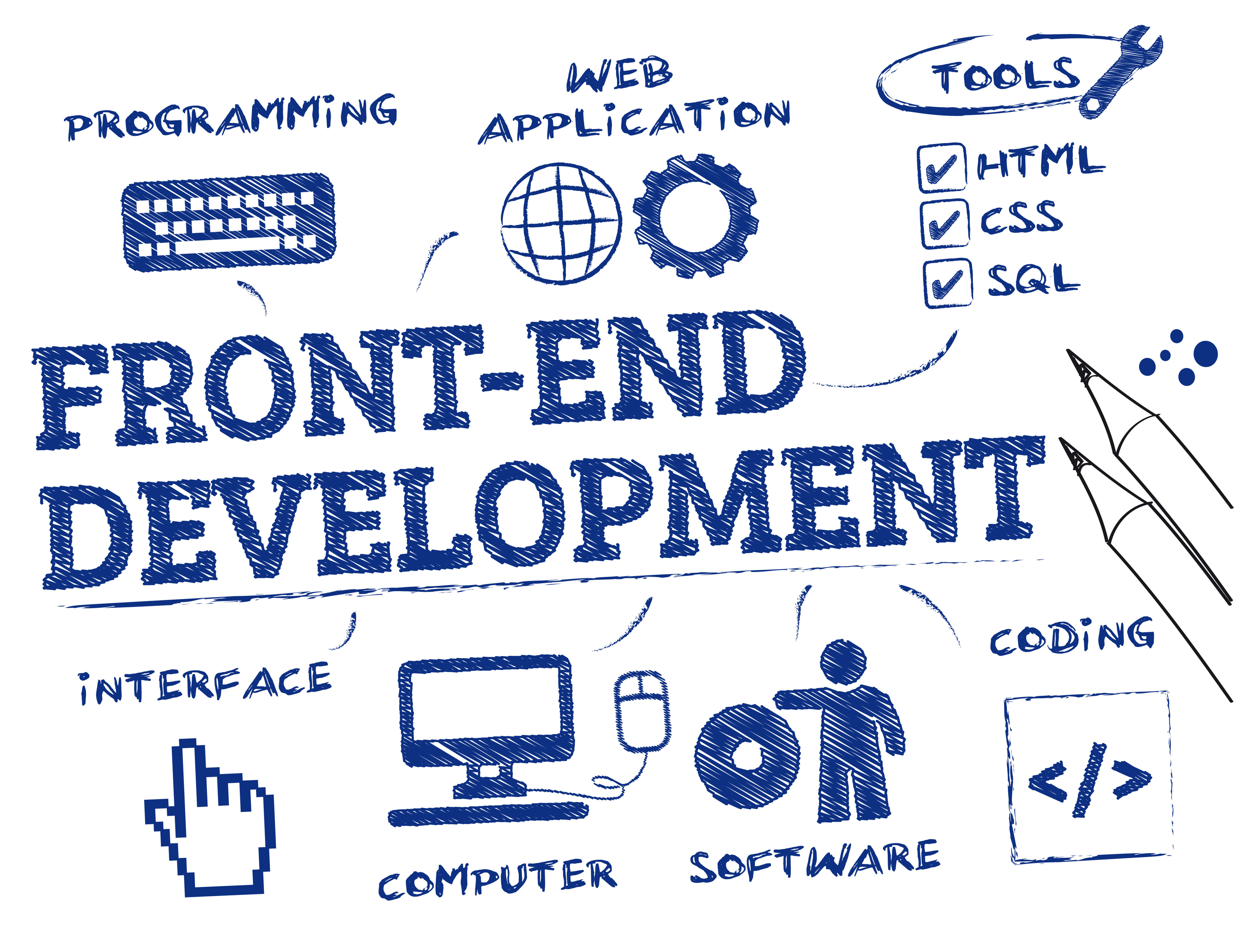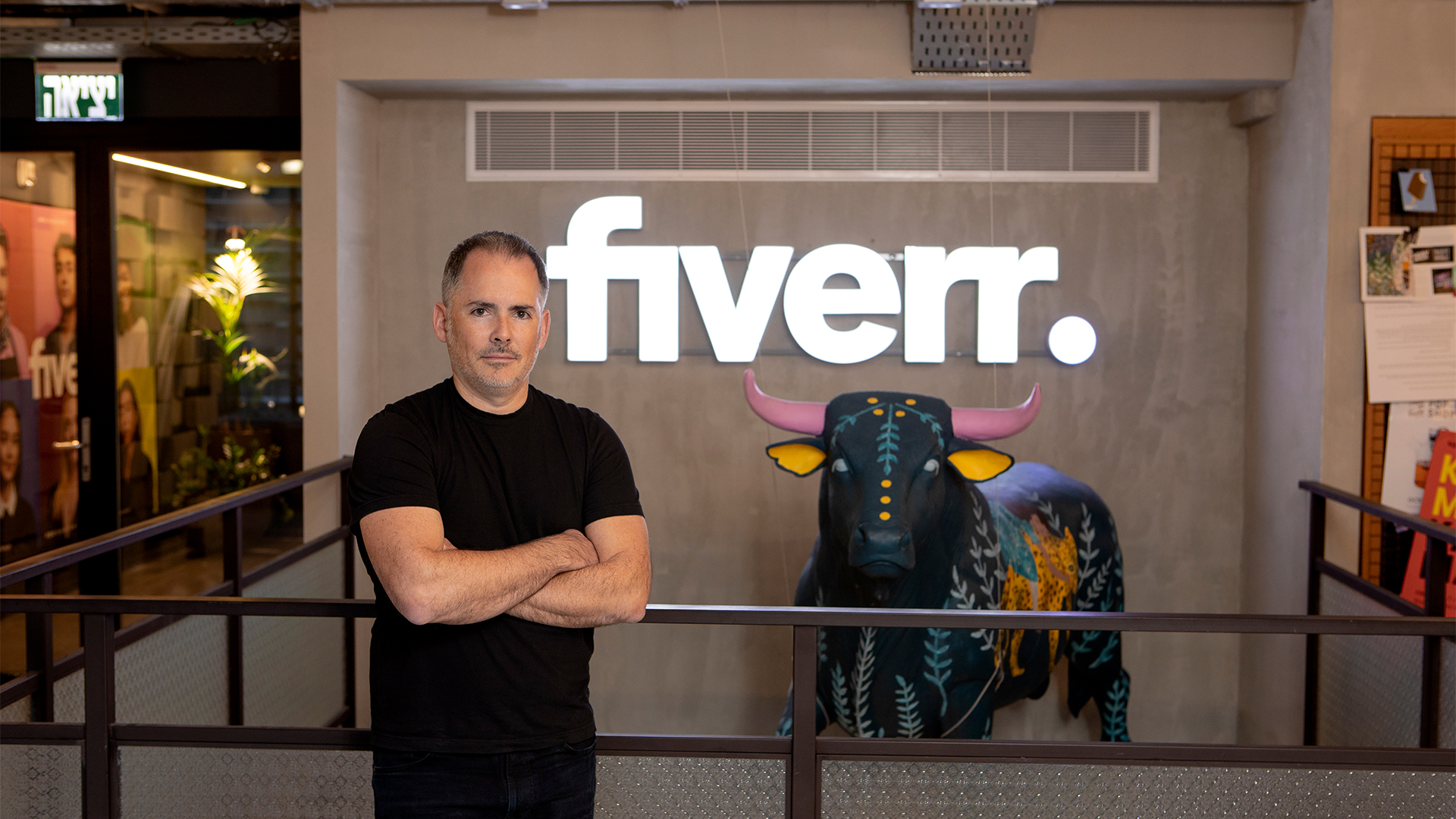Eight crucial front-end developer skills for 2025
Eight front-end developer skills for those in demand

Front-end developers are high in demand, with this trend set to grow as employers increasingly look to attract more customers and keep them on their websites. And there's never been a better time to get into this field.
According to Developers.Net, the software engineering industry is facing a record-breaking shortage of professionals, with skilled front-end developers increasingly hard to find.
Front-end developer or back-end developer?
For clarification, back-end development focuses on everything that sits behind a website, for example, the apps, data, logic, and systems that power it. Front-end development centers around the visual elements and interfaces that users interact with on the site, as well as how visitors use them.
The User Interface (UI) is a feature of this, as it encompasses the tools and buttons that users see, e.g. the search bar, so it's prudent to master this when a well-designed UI can boost engagement on your website; however, front-end developers will mainly determine how users interact with these tools, as well as their look and feel.
With both types of developers requiring a specific set of skills, according to March 2023 PayScale data, both are very much in demand. However, for small businesses in particular, and without the budget of a larger competitor, prioritizing front-end development is crucial to shaping the user experience and improving brand awareness.
Become a front-end developer in 2023
Front-end development in 2023 is all about developing solutions for businesses that offer quick and efficient ways to improve applications, moving away from the more traditional methods of coding; but even low code development still requires some coding skill. So what are the benefits of low code development?
The most obvious benefit for businesses is that common programming tasks can be performed with a simple drag-and-drop method, and any solution that can mean features are easy to incorporate and reusable is advantageous.
Sign up today and you will receive a free copy of our Future Focus 2025 report - the leading guidance on AI, cybersecurity and other IT challenges as per 700+ senior executives
What are the responsibilities of a front-end developer?
Front-end developer responsibilities include making sure page speed and graphics are optimized for user experience, checking that the website is visually consistent with a brand’s identity, and improving the experience of accessing the website on a mobile device.
Front-end developers also have to test and maintain core website elements and ensure that these can be reused not only throughout the website by them, but by their team and potential successor in the role. Front-end developers may also be responsible for search engine optimization (SEO) for their websites. However, in larger organizations, this is likely to be performed by a dedicated marketing team.
Every website has a front-end and back-end, which is why front-end developers never work alone. On a typical workday, front-end developers turn web designers’ ideas into responsive and fine-looking user interfaces, while back-end developers, maintaining the “behind the scenes” infrastructure of a website, such as servers and databases, complement front-end developers’ work.
Front-end developer skills checklist for 2023
1. HTML and CSS
Hypertext markup language (HTML) and cascading style sheets (CSS) are a website’s nuts and bolts. While HTML gives structure to web pages, CSS helps style the HTML elements with color, fonts, typeface, and more.
2. JavaScript
HTML and CSS fit the bill perfectly for a text-only website, as they’re predominantly static. JavaScript can be a useful addition to responsive websites.
This client-side programming language lets you add interactive features, including polls, slideshows, and forms, to a website. It also offers support for dynamic elements, including, but not limited to, page animation, scrolling, audio, and video.
3. Frameworks and Libraries
Frameworks are pre-written code modules for common website elements like login and search interfaces. Examples of popular JavaScript frameworks include AngularJS, Ember, and ReactJS.
Libraries, an assortment of plug-ins and extensions, are useful for adding prefabricated elements to a website. A good example is a countdown timer on a retail website. jQuery is a commonly-used open-source JavaScript library with plenty of customization options.
4. Version control
A version control system is software specifically designed to track changes made to code over time. Using this software, developers can compare earlier versions of the code with an older version, commit to changes, or restore the previous version.
Furthermore, version control systems can double as backups of original source code, making collaboration easier. Git version control system, for example, allows multiple developers or teams to upload or download source code changes.
5. Cross-browser and device testing
Depending on various factors, a website’s appearance may change across browsers. Developers use browser tools to address this issue.
For instance, when a PC accesses a desktop website, the site uses more screen real estate and small fonts than mobile sites, which use larger text and less screen real estate Browser tools allow developers to test and fine-tune webpages in a way that is best suited to a particular browser. Additionally, developers use responsive design techniques to change site layout and design depending on the type of device accessing it.
For instance, when a PC accesses a desktop website, the site uses more screen real estate and small fonts than mobile sites, which use larger text and less screen real estate.
6. Web performance optimisation (WPO)
A slow-loading website can reduce user engagement drastically. Website performance optimization techniques help ensure faster loading times through automation tools.
For example, Grunt automatically optimizes images and makes page components lighter depending on the device without compromising website functionality.
7. Search engine optimization (SEO)
Search engine optimization (SEO) is the practice of increasing traffic to a website organically through search results.
Generally, there is a separate team to supervise SEO practices. However, knowing the basics can help you determine where to place titles, meta descriptions, and text on a website so search engines can easily find them.
8. Soft skills are vital
On top of all the specific IT skills that one needs to become a good front-end developer, several soft skills will carry anyone far in their career. Among these is good communication, particularly between the front and back-end development teams as changes are applied to a webpage.
Just as re-skilling must also include ‘soft skills’, non-technical skills are vital to personal and professional development, but cannot be conveyed in a classroom or tutorial. Being able to balance the technical know-how with being personable, cooperative, and capable of thinking on your feet will serve any front-end developer very well.
Securing a front-end development role
Traditional routes into front-end development roles via university are still highly common in the global tech industry. However, there are other ways forward.
RELATED RESOURCE

Transition to DevOps services and tools and help your teams rapidly iterate and scale.
Computer science, IT, and software engineering courses might be the most obvious routes into web development, but it is possible to enroll in a UI or UX design boot camp to kickstart your career.
Bootcamps like these offer great opportunities for coders or programmers who are seeking ways to transition into a different career without needing to return to college. Here we share the best courses for app development and coding.
As with many other occupations, gaining work experience is important when it comes to improving front-end development skills. As such, you can start small by building websites using HTML and CSS before progressing to more complex methods, such as JavaScript development, and always keep up with how the industry around you is changing.
-
 ‘A major step forward’: Keir Starmer’s £187 million tech skills drive welcomed by UK industry
‘A major step forward’: Keir Starmer’s £187 million tech skills drive welcomed by UK industryNews The ‘TechFirst’ program aims to shore up the UK’s digital skills to meet future AI needs
-
 Multiverse wants to train 15,000 new AI apprentices across the UK
Multiverse wants to train 15,000 new AI apprentices across the UKNews The program, open to workers across the UK, is designed to support the UK government's AI Opportunities Action Plan
-
 Millennials are leading the charge on AI skills development
Millennials are leading the charge on AI skills developmentNews Workday research suggests mid-career workers are largely on board with upskilling to take advantage of AI
-
 Surging AI adoption rates are creating an unprecedented skills shortage
Surging AI adoption rates are creating an unprecedented skills shortageNews Enterprises ramping up the adoption of the technology are facing serious bottlenecks
-
 Women show more team spirit when it comes to cybersecurity, yet they're still missing out on opportunities
Women show more team spirit when it comes to cybersecurity, yet they're still missing out on opportunitiesNews While they're more likely to believe that responsibility should be shared, women are less likely to get the necessary training
-
 ‘AI is coming for your jobs. It’s coming for my job too’: Fiverr CEO urges staff to upskill or be left behind
‘AI is coming for your jobs. It’s coming for my job too’: Fiverr CEO urges staff to upskill or be left behindNews The latest in a string of AI skills warnings has urged staff to begin preparing for the worst
-
 IBM pledges support for UK government cyber skills program
IBM pledges support for UK government cyber skills programNews The CyberFirst Girls competition is aimed at increasing diversity in the cyber security workforce
-
 AI skills training can't be left in the hands of big tech
AI skills training can't be left in the hands of big techNews Speakers at Turing's AI UK conference lay out challenges to AI skills readiness

